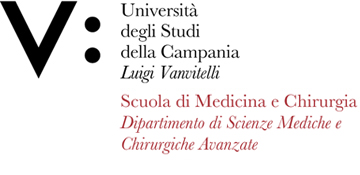Virginia TIRINO
Insegnamento di C I ISTOLOGIA ED EMBRIOLOGIA MEDICA
Corso di laurea magistrale a ciclo unico in MEDICINA E CHIRURGIA (Sede di Napoli)
SSD: BIO/17
CFU: 8,00
ORE PER UNITÀ DIDATTICA: 80,00
Periodo di Erogazione: Secondo Semestre
Italiano
| Lingua di insegnamento | Lingua italiana |
| Contenuti | Il corso è improntato a fornire allo studente le nozioni fondamentali relative ai tessuti dell'organismo umano, sempre in rapporto alla loro funzione specifica e correlata alla condizione normale e quindi di buona salute complessiva dell’Uomo. Ioltre, oltre alla istofisiologia dei tessuti, vengono fornite allo studente le basi fondamentali ai fini della relazione fra funzione tissutale e patologie, anche e non solo sulla base dei meccanismi omeopatici e di alterazione molecolare. Allo stesso tempo, il corso si prefigge di fornire conoscenze riguardo lo sviluppo embrionale dell'Uomo nei vari stadi di sviluppo ed i relativi meccanismi di regolazione anche in relazione alle malformazioni ed ai difetti di sviluppo, oltre che ai rapporti che esistono fra mantenimento dello stato differenziato e processi che interferiscono con lo stesso portando alla disregolazione ed allo stato indifferenziato, alla base di numerose patologie. |
| Testi di riferimento | A.A. Vari “ISTOLOGIA di V. MONESI” Piccin Editore |
| Obiettivi formativi | Conoscenza dei metodi di indagine del laboratorio di istologia; conoscenza dei tessuti che costituiscono |
| Prerequisiti | Lo studente deve conoscere la struttura e funzione della cellula, che fanno parte del corso di Biologia. |
| Metodologie didattiche | Lezioni frontali, esercitazioni con il riconoscimento dei tessuti istologici, attività di tutoraggio settimanale |
| Metodi di valutazione | Durante il tirocinio professionalizzante, il docente effettua una serie di domande agli studenti per verificare il loro apprendimento riguardo gli argomenti del corso e, in sede, vengono riproposti quelli poco chiari con approfondimento. |
| Altre informazioni | Il tirocinio professionalizzante prevede esercitazioni di Istologia. Ciascuna esercitazione ha una durata di tre ore. Il tirocinio prevede 9 esercitazioni così suddivise: |
| Programma del corso | A) ISTOLOGIA: Metodi e mezzi di indagine per l’osservazione delle cellule, dei tessuti e degli |
English
| Teaching language | Italian language |
| Contents | The course aims on providing the student the basis related to the tissues of the human organism, always in relation to their specific function. Besides, in addition to the histophysiology of tissues, the student is given the fundamental basis for the relationship between tissue function and pathologies, also and not only on the basis of homeopathic mechanisms and molecular alterations. At the same time, the course aims to provide knowledge about the embryonic development of man in the various stages of development and its mechanisms of regulation also in relation to malformations and developmental defects, as well as the relationships that exist among maintaining the differentiated state and processes that interfere with the same, leading to disregulation and undifferentiated state, the basis of many pathologies. |
| Textbook and course materials | A.A. Vari “ISTOLOGIA di V. MONESI” Piccin Editore |
| Course objectives | Knowledge of the methods of investigation of the hisotlogy laboratory; Knowledge of the human tissues, the molecular mechanisms of differentiation, growth and stages that lead to the development of the human organism, including the main morphogenetic factors and the regulator genes. |
| Prerequisites | The student should have knowledge of the structure and function of the cell, which are part of the biology course. |
| Teaching methods | Lectures, histology laboratory, weekly tutoring activities |
| Evaluation methods | During the histology laboratory, the teacher makes a series of questions to the students to verify their learning about the topics of the course and are reproposed the unclear ones with deepening. |
| Other information | The histology laboratory is a practical laboratory taking place in the classroom equipped with optical microscopes. Students are divided into groups of 30 and each laboratory lasts for two hours. It includes 6 practical activities subdivided as following : |
| Course Syllabus | Histology |








